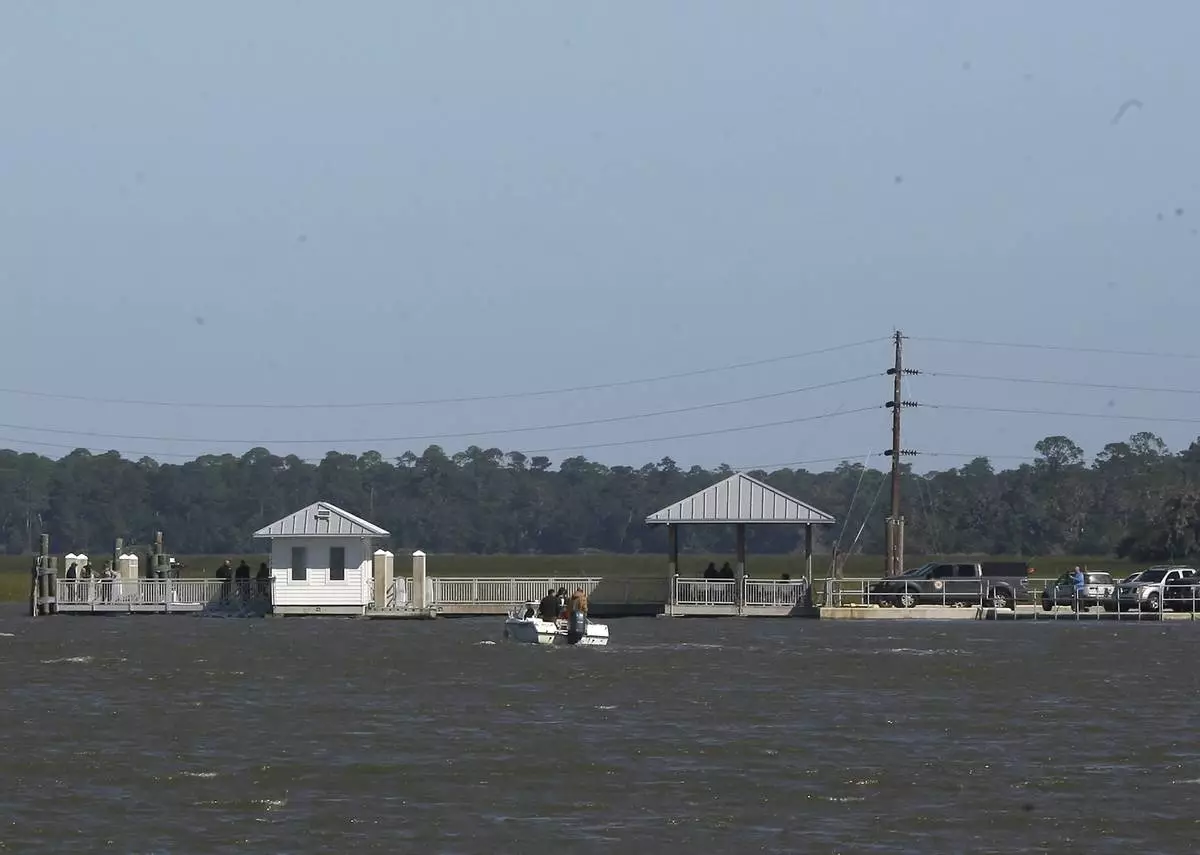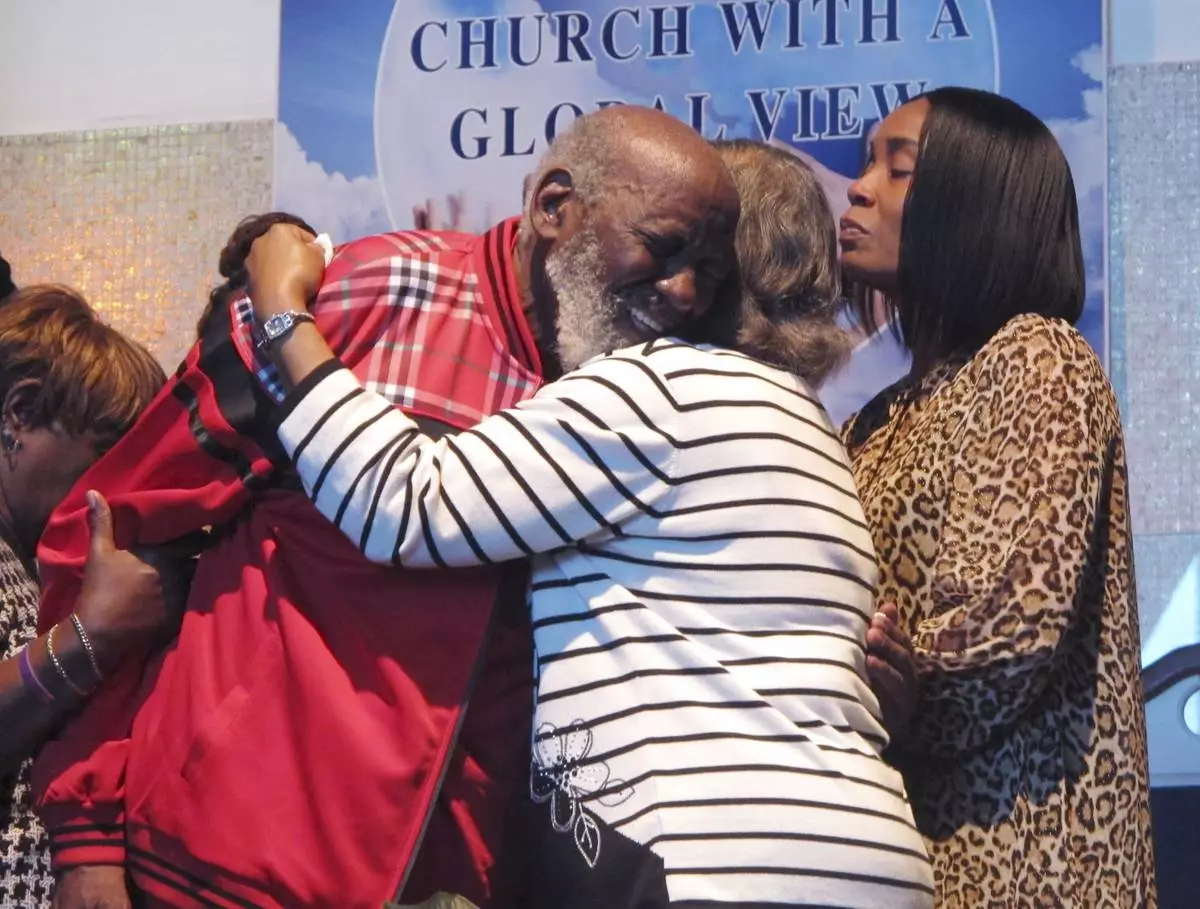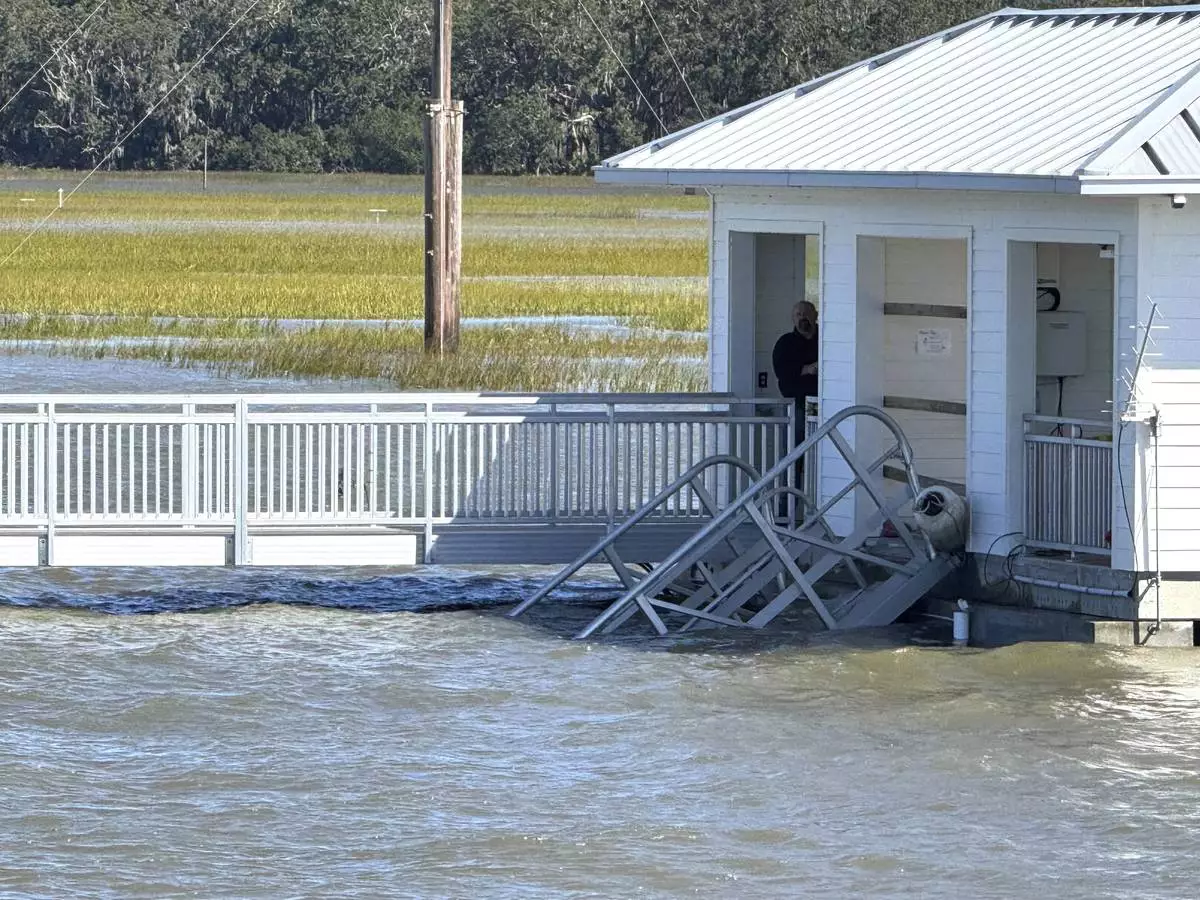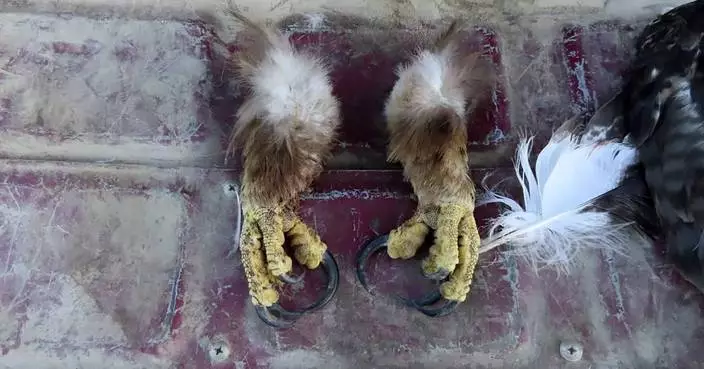TOKYO (AP) — Japan and the United States on Wednesday signed an arrangement to jointly develop a new type of missile defense system as the allies seek to defend against the growing threat of hypersonic weapons, which are possessed by China and Russia and being tested by North Korea.
The project was initially agreed between Japan’s Prime Minister Fumio Kishida and U.S. President Joe Biden at their summit last August and reaffirmed between the leaders during Kishida's April visit to Washington. The Glide Sphere Interceptor is planned for deployment by the mid-2030s.
Wednesday’s agreement determines the allocation of responsibility and decision-making process, a first major step in the project, Japanese defense ministry officials said. They hope to decide on Japanese contractors and start the development process by March 2025.
Hypersonic weapons are designed to exceed Mach 5, or five times the speed of sound, posing a threat to regional missile-defense systems with their speed and maneuverability. Developing interceptors of them is a challenge.
Japan's defense ministry called it a “pressing issue” and noted that hypersonic weapons in the region have dramatically improved in recent years.
Under the arrangement, Japan is responsible for developing a part at the interceptor's tip that separates in space to destroy the incoming warhead, as well as its rocket motors, officials said.
Japan has earmarked 75.7 billion yen ($490 million) for initial development and testing of the interceptor, according to the defense ministry.
The cost includes making components for the two companies, Raytheon Technologies and Northrop Grumman, that are developing the weapon in a competition led by the U.S. Missile Defense Agency. One will be chosen for the project.
The MDA has estimated the cost to develop the hypersonic missile interceptor will exceed $3 billion, including Japan's share of $1 billion.
The interceptors will be deployed on Aegis-class destroyers, like the ship-to-air Standard Missile-3 that Japan previously co-developed with the United States.
Japan has been accelerating its miliary buildup as it stresses the need to fortify its deterrence against growing threats. Japan has also significantly eased its weapons export policy to allow co-developed lethal weapons to third countries.
Follow AP's Asia-Pacific news at https://apnews.com/hub/asia-pacific

FILE - U.S. President Joe Biden, left, shakes hands with Japan's Prime Minister Fumio Kishida during a joint news conference with South Korean President Yoon Suk Yeol, not visible, on Aug. 18, 2023, at Camp David, the presidential retreat, near Thurmont, Md. Japan and the United States on Wednesday, May 15, 2024 signed an arrangement to jointly develop a new type of missile defense system as the allies seek to defend against the growing threat of hypersonic weapons, which are possessed by China and Russia and being tested by North Korea. (AP Photo/Andrew Harnik, File)
SAVANNAH, Ga. (AP) — Survivors of a deadly walkway collapse at a state-run ferry dock on a Georgia island said Thursday that the government should help them pay for funerals for the seven people who died as well as medical bills and mental health counseling for those who lived.
Lawmakers on the Georgia Senate's Urban Affairs Committee heard from four people who were at the dock on Sapelo Island on Oct. 19 when a metal gangway snapped in the middle, sending dozens of people plunging into the water.
Among them was Yvonne Brockington of Jacksonville, Florida, who had arranged for more than 50 members of her club for older adults to visit the island during an annual cultural festival organized by its tiny Gullah-Geechee community of Black slave descendants.
Brockington said she was waiting with others to board an afternoon ferry off the island when she suddenly felt as if she was in a falling elevator. When she stopped suddenly, she felt both of her legs break. While bystanders used a rope to pull Brockington to safety, four members of her club perished.
“The psychological effect, I don't know if it will ever go away, but we definitely need help,” Brockington told lawmakers via video conference from her hospital bed. “It should not have happened. The state of Georgia owes us more than resources. They owe us an apology, and they need to make sure it never happens again.”
Other survivors told the meeting in Atlanta that the traumatic day still haunts them.
Darrel Jenkins, who pulled two people from the water but never learned whether they lived or died, said he continues to have nightmares and asks himself: “What about the people that might not have lived? Could I have done more?”
Regina Brinson said her 79-year-old uncle, Isaiah Thomas, drowned after she had to pry his clutching fingers from her shirt to avoid being dragged underwater herself.
“We need mental health support, financial support, resources to ensure that the survivors and their families have what they need to start recovery,” Brinson said.
The dock on Sapelo Island is operated by the state Department of Natural Resources, which manages the daily ferry service to and from the mainland.
The agency says about 700 people visited Oct. 19 for Cultural Day, a celebration of the tiny Hogg Hummock community founded by emancipated slaves after the Civil War. Hogg Hummock is one of the few Gullah-Geechee communities remaining in the South, where slaves who worked isolated island plantations retained much of their African heritage.
Mawuli Davis, an attorney for some of the people injured in the collapse, told lawmakers his clients have been contacted by state investigators for interviews but not by anyone offering assistance.
Lawmakers said they agree that the state should do more to assist the victims. But how much influence they will have isn't clear: The Senate Urban Affairs Committee is made up of six Democrats, while Republicans control the legislature and the governor's office.
“The state has responsibility,” said Sen. Donzella James, an Atlanta Democrat and the committee's chairperson. “We’re having this hearing to find out what it is exactly they're responsible for.”
The Department of Natural Resources, with assistance from the Georgia Bureau of Investigation, is investigating what caused the collapse. But victims' lawyers have said they don't trust the state agency to investigate itself, and last week Attorney General Chris Carr said he had called in an engineering firm to conduct an independent, parallel investigation.
No one from the Department of Natural Resources spoke before the committee Thursday.
Last weekend the department offered free counseling services to residents of Sapelo Island as well as on the mainland in McIntosh County. It said in a news release that “ongoing mental health resources will be provided to those in need” and that Natural Resources Commissioner Walter Rabon contacted families of those killed and “shared a phone number with them should they need anything.”
The news release also included a hyperlink to an online form that injured people can fill out to file a liability claim with the state.
A Department of Natural Resources spokesperson did not immediately respond to an email message seeking more information on how it is assisting victims.

A portion of the gangway which collapsed Saturday afternoon remains visible on Sapelo Island in McIntosh county, Ga., Sunday, Oct. 20, 2024. (AP Photo/Lewis Levine)

Regina Brinson, center, weeps at a news conference Tuesday, Oct. 22, 2024, while speaking alongside her mother, Katrena Alexander and attorney Ben Crump during a news conference in Jacksonville, Fla. Crump represents families of three of the seven people killed when a ferry dock walkway collapsed on Sapelo Island, Ga., on Saturday, Oct. 19. (AP Photo/Russ Bynum)

Wilbert Gardner, left, hugs Katrena Alexander while Alexander's daughter, Regina Brinson, right, looks on during a news conference Tuesday, Oct. 22, 2024, in Jacksonville, Fla, A dock gangway collapse happened as people were leaving a cultural festival on Sapelo Island, Georgia, on Saturday, Oct. 19, 2024. Alexander's brother, Isaiah Thomas, was among the dead. Gardner had a friend who was hospitalized with injuries. (AP Photo/Russ Bynum)

FILE - A portion of the collapsed gangway remains visible on Sapelo Island in McIntosh County, Ga., on Sunday, Oct. 20, 2024. (AP Photo/Lewis Levine, File)














